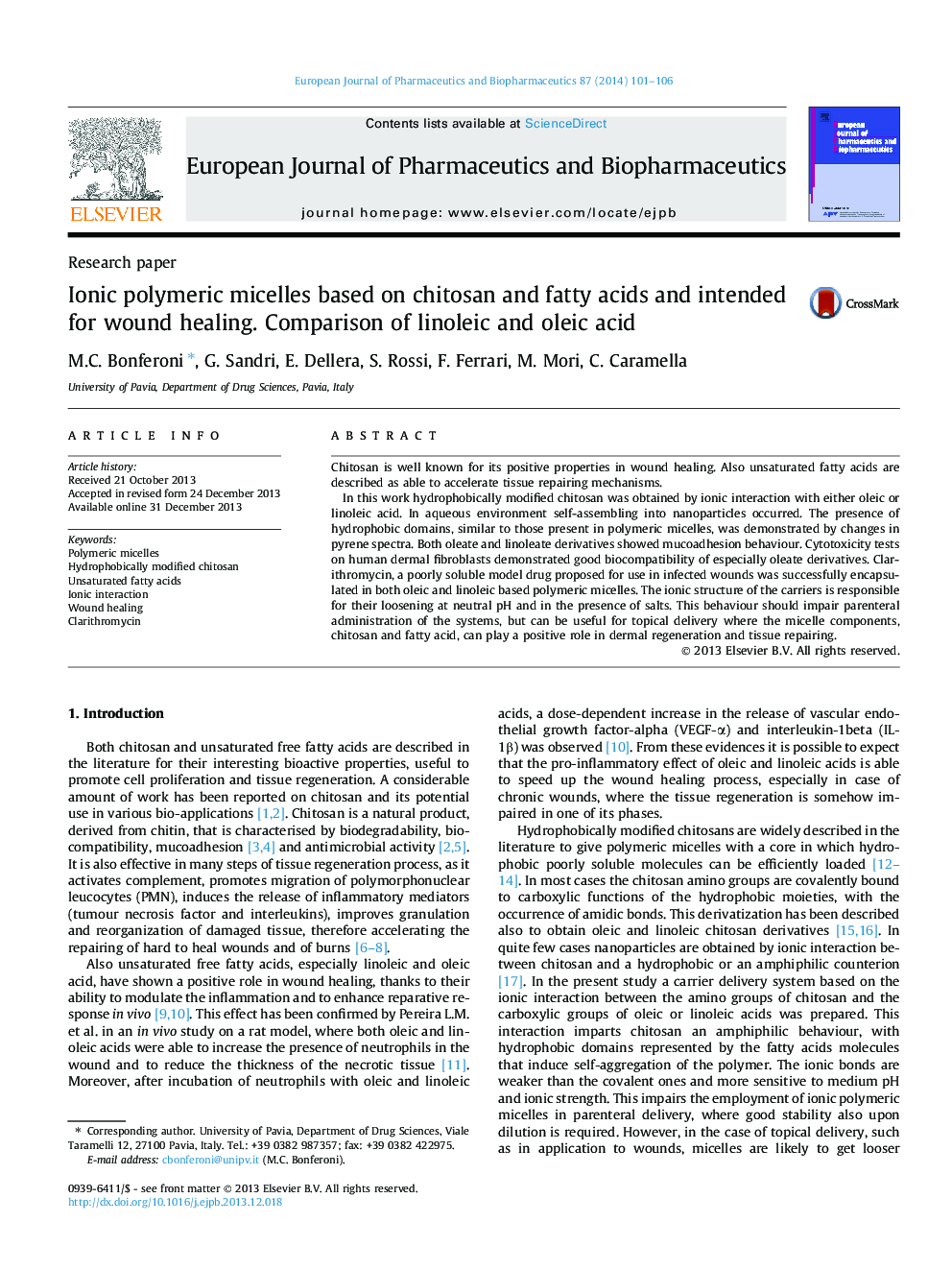| کد مقاله | کد نشریه | سال انتشار | مقاله انگلیسی | نسخه تمام متن |
|---|---|---|---|---|
| 2083624 | 1545342 | 2014 | 6 صفحه PDF | دانلود رایگان |
Chitosan is well known for its positive properties in wound healing. Also unsaturated fatty acids are described as able to accelerate tissue repairing mechanisms.In this work hydrophobically modified chitosan was obtained by ionic interaction with either oleic or linoleic acid. In aqueous environment self-assembling into nanoparticles occurred. The presence of hydrophobic domains, similar to those present in polymeric micelles, was demonstrated by changes in pyrene spectra. Both oleate and linoleate derivatives showed mucoadhesion behaviour. Cytotoxicity tests on human dermal fibroblasts demonstrated good biocompatibility of especially oleate derivatives. Clarithromycin, a poorly soluble model drug proposed for use in infected wounds was successfully encapsulated in both oleic and linoleic based polymeric micelles. The ionic structure of the carriers is responsible for their loosening at neutral pH and in the presence of salts. This behaviour should impair parenteral administration of the systems, but can be useful for topical delivery where the micelle components, chitosan and fatty acid, can play a positive role in dermal regeneration and tissue repairing.
Figure optionsDownload high-quality image (84 K)Download as PowerPoint slide
Journal: European Journal of Pharmaceutics and Biopharmaceutics - Volume 87, Issue 1, May 2014, Pages 101–106
